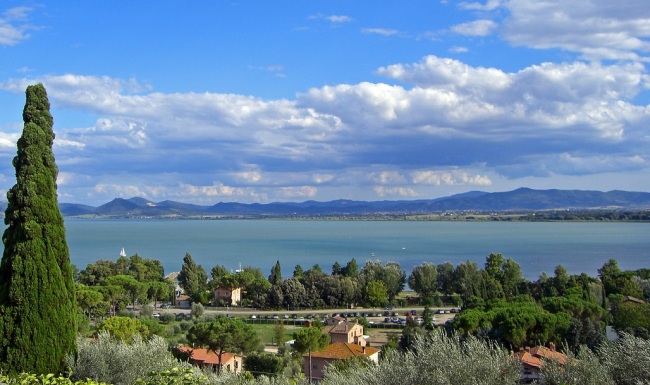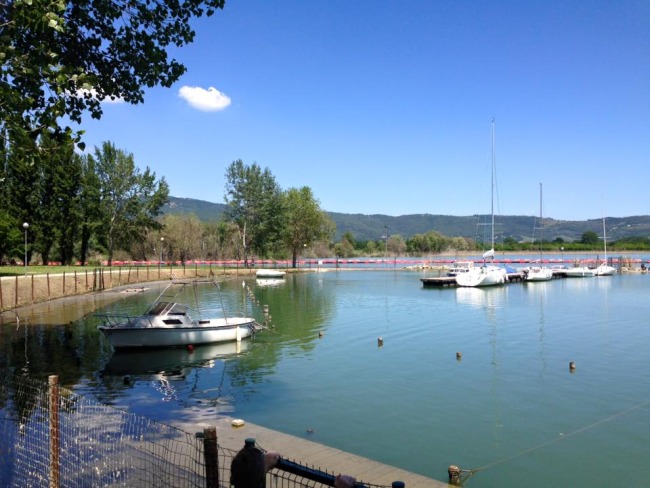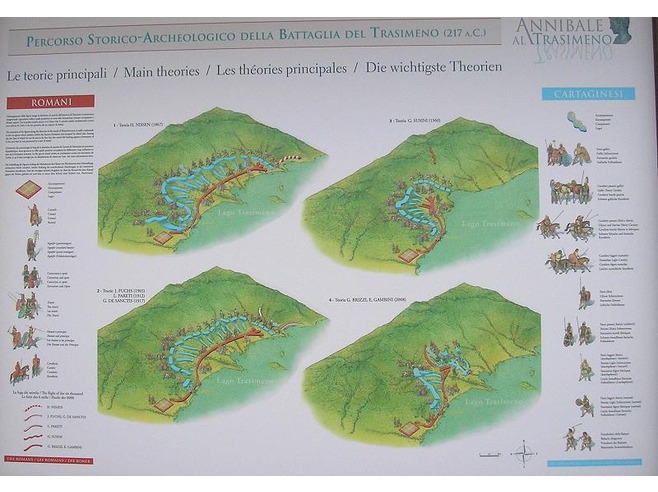Based on a request in the comments from my Cinque Terre post, I thought I'd put something together on Lake Trasimeno.
My visit to the lake was very short, but deliberate. I had a full day of history in Rome at the Forum, Colosseum, Circus Maximus, and Catacombs. My family is not fond of 'history' or 'battle' vacations, so I decided the best way to handle this was to pack it into the drive from Florence to Rome. On that drive, we first stopped at Siena, and spent several hours walking the beautiful streets of this city. Siena was too short, and worthy of a separate post altogether. But for me, the visit meant we were only an hour from Lake Trasimeno, which was 15 minutes out of our way on the final ride to Rome.
As a result, it was easy convincing everyone that dad could have one more slice of history pie.
Along the way, I told the story of Hannibal and the battle, and why it was so significant. First, it was the largest ambush in history, and remains so. Second, it was one of the first examples of a military turning movement. Finally, it was a decisive victory for the Carthaginians, wiping out two entire Roman legions by a factor of at least six Romans to one Carthaginian. However, some estimates put this ratio at 11 to 1.

Hannibal's strategy, in being pursued by Gaius Flaminius, was to draw the Romans into a location suitable to his needs. He found the hills above the lake just the kind of landscape he was looking for. He placed some of his forces on the hills, ordering them to light many fires and tend them to let the Romans think they'd taken the high ground for the night, further from the lake. He split his cavalry deep in the woods to the west, hoping to draw in the Romans, then using the cavalry to cut off their retreat. His infantry was in the woods on the hillside along the path bordering the marshes.
Hannibal's skirmishers drew the Romans along the path, just as Hannibal had hoped, allowing his forces to race down the hillside and out of the woods, pushing the Romans into the marshes and doing so quickly enough to prevent their battle formations. His cavalry cut off the escape, and in four hours the Romans were completely destroyed.
Lake Trasimeno opened the path to Rome, but Hannibal refused to take it, instead laying waste to the countryside around it for several more years. Some people claim Hannibal was simply trying to force Rome into a favorable agreement on terms rather than completely defeat it. Rome, devastated militarily, appointed a dictator, Quintus Fabius Maximus, who adopted a strategy of harassment today known as the "Fabian Strategy" or a "War of Posts", as George Washington described his version. The strategy was effective and when Rome regained its strength, Maximus was removed and the strategy abandoned.
The net result of this was to lead to the Battle of Cannae, in which Hannibal completely devastated Rome's fighting ability, and a return of Maximus as dictator. Hannibal's lack of desire to wipe out Rome prompted his cavalry commander, Maharbal, to say "Hannibal, you know how to gain a victory, but not how to use one."
The battle itself took place far north of the current northern marshes of the lake. Lake Trasimeno is not fed by any streams or rivers, and has been slowly shrinking. The battle location, today, is a farmhouse and a meadow. The marshes still exist, but much further south of their original location, and have been transformed into a marina. There isn't much there to mark the battle.
There is a tourist spot on the lake with some statues which are related to telling the story of the battle, though I had a hard time figuring them out. Up in the town, at the actual location, there isn't anything but a parking lot and a sign with a description of the battle.
A view of the northern edge of the lake, with the hills in the distance and marshes visible to the right in the picture.

The sign at the location of the battle:





